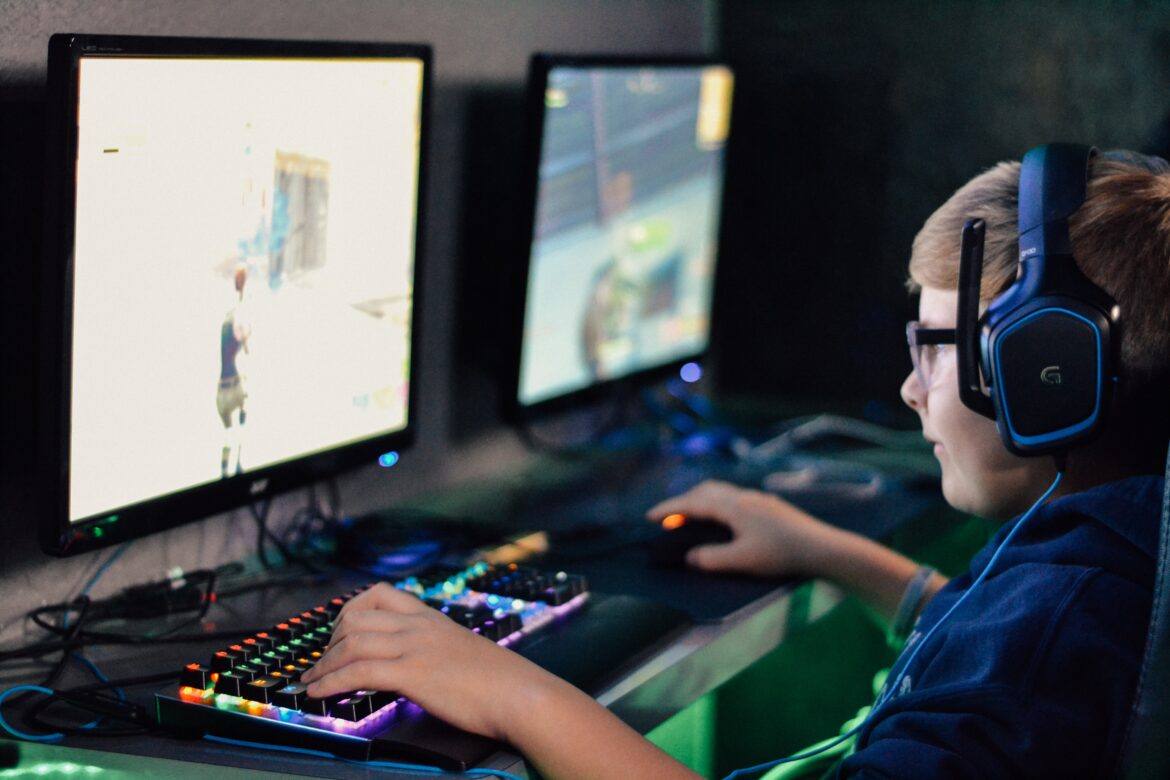This last year has seen huge gains for competitive gaming, known as esports, in education. High schools are upgrading gaming clubs into competitive teams and playing in high school leagues. Universities are building custom esports labs for their new varsity gaming teams. Esports scholarships will be offered at several hundred universities in the 2019-2020 school year. The activity has arrived in a big way within the educator’s realm of influence. Let’s embrace it.
Plugging into Esports
I went to my first esport event in the fall of 2018, a collegiate Overwatch tournament with 15 teams from across Texas, Oklahoma, Mississippi, New Mexico, and Arkansas. It was hosted by the local professional Overwatch team, the Dallas Fuel. This event highlighted the growing excitement of esports for both the students and fans, and allowed me to network with some industry professionals and passionate collegiate coaches. I took this experience and began laying out a framework for high school esports. I created the necessary paperwork for parental permissions, student contracts, rules, and expectations, as well as looking at pre-existing district policies for student social media use, tech usage, and athletics eligibility rules.
Four months later, our high school was actively seeking new avenues for student engagement. The principal had expressed interest in starting robotics and I took the opportunity to pitch esports. As it turns out, the principal was aware of esports and understood the value that it could provide to both the students and the school. I was granted my extra-curricular esports program for team competition. In addition, I began teaching a CTE marketing practicum class (Social Media Marketing / Sports Marketing) that would actually run the esport teams as a business.
This class will be designing and implementing marketing campaigns for the brand “Badger Esports.” This will include social media, local print ads, broadcasting, and event planning. Student enrollment for this advanced marketing class was 15% of the high school. Student engagement? Check!
Some of the Benefits of Esports in High School
- Inclusive environment:
- Everyone plays games, so anyone can be a part of a competitive team.
- Gaming crosses social groups and genders.
- It will appeal to students who would otherwise not participate in school activities.
- Social and emotional learning:
- Team esports relies heavily on constant communication, collaboration, planning, and execution.
- Learning to deal with intense emotions in a competitive environment
- Builds student relationships and confidence
- Student engagement value is huge.
Integrated Education
Esports is a great vehicle for education. It is easy to tie the student engagement value of esports to other educational goals like I have with my marketing class. I am using esports to increase student interest in an advanced business class by showing how marketing really works in the gaming realm where students already feel empowered.
The high school esport leagues also offer an assortment of education-specific resources. We use the high school league organization NASEF (North American Scholastic Esports Federation), which provides a host of additional resources from Common Core-approved curriculum, team web pages, free licenses for Overwatch, personal coaching, webinars, and more. NASEF was created from within the education sector by the University of California at Irvine. And did I mention it is free?
Possible Challenges and Solutions
There are several possible barriers you may experience when starting up an esports program. These notes will help you get your program approved.
- Highlight the complexities of team esports. The social skills and execution that are required to play in a team environment are no less than traditional sports. The students are doing their own play calling and on-the-fly adjustments entirely on their own.
- Emphasize that esports is not an excuse to play games all day. Be sure to use the same eligibility requirements as your school’s traditional sports have.
- For some, esports is a new path to college. List local/state colleges that have varsity esport programs and those that include scholarship opportunities.
- Make sure your potential games have age appropriate ESRB ratings. At the high school level, you can use games rated E, E10+, and Teen (13+).
Good Luck and Have Fun!
Esports in education is still gaining momentum, and it is an exciting time to be a part of this new engagement tool. Your students will be all over esports, so be sure to harness that. I am part of a group of educational esport enthusiasts called EsportsEdu. This group is a wealth of knowledge, especially for beginning organizers.
However you get started, make sure you have a plan and a vision, and don’t forget to have fun.
Matt Tarpley works in I.T. for the Merkel Independent School District and is an #esportsedu ambassador. He coaches high school esports, teach an esports marketing class, and is the McMurry University varsity esports head coach.

